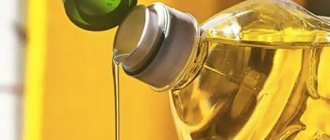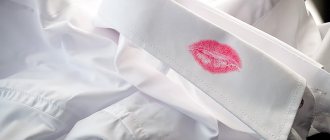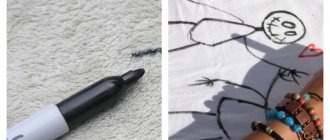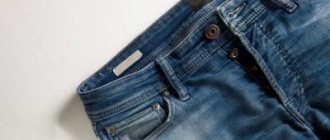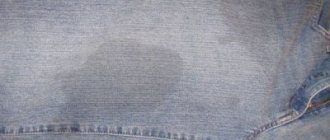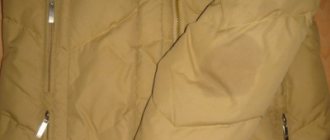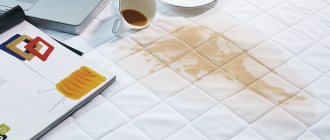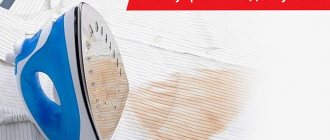After using wax products, the problem often arises of how to remove traces of wax from a particular surface.
Depending on the material, various methods and means are used. These can be household chemicals, homemade formulations, or non-chemical methods.
When choosing a technology, it is worth remembering the wax removal rules and limitations. We will tell you in the article how to remove wax (candle and depilatory) from various surfaces.
Hot delete
One of the most popular ways to remove candle wax is by applying high heat.
But before you do this, make sure your fabric can be handled this way. If your clothes are made of natural fabric, such as linen, cotton, calico, then there will be no problems and you can safely heat them. If it is synthetic or delicate fabric, then this method will only ruin your clothes. For hot removal we need an iron. If the speck is small, it can be replaced with a heated spoon.
- Prepare your iron by setting it to the lowest temperature setting available.
- Place a paper towel under and over the fabric.
- Start ironing the stain; if the napkin absorbs a lot, replace it.
- It will take you 10-15 minutes to treat the stain.
- Finally, wash your clothes in the washing machine.
It is important to note that the napkin can be replaced with any absorbent, then the procedure time will be significantly reduced.
If you don’t have a spoon or iron at hand, you can only use hot water. To do this, stretch the clothes over some container (bathtub, sink) and start pouring hot water from the tap or kettle. After this procedure, wipe with a clean cloth and put in the washing machine.
If you just stained your clothes, you can remove candle wax using the freezer. Place the soiled clothing in a plastic bag and place it in the freezer. Do not touch the walls of the chamber. After a few hours, when the wax has completely hardened, take out your clothes and begin to wrinkle them at the site of contamination. Don't hesitate to do this, otherwise the wax won't crumble as much. After cleaning, scrape off any residue with your fingernail or spoon.
Precautionary measures
It is worth understanding what surface you need to deal with. Cleaning wax from the same candlestick will not be as difficult as if it needed to be removed from the walls. The easiest way to remove it is from glass and wood, but from clothes it is extremely difficult to figure out the cleaning methods on your own.
You should not stretch the material while the wax is drying, since it completely saturates the product and therefore begins to penetrate the underside of the fabric, getting stuck in the fibers. When the fabric is stretched, its area may increase. You should also not stretch the fabric too much when using chemical methods to remove candle wax.
In this case, the fabric may stretch in this place due to the aggressive compounds that are applied to it. When using such compounds, precautions should be taken. This applies to working with rubber gloves when using ammonia and kerosene, as well as using a respirator and ventilating the room if ammonia, vinegar, kerosene or ammonia are used.
When using household chemicals, you need to wash things thoroughly several times until the substances stop working. Otherwise, an allergic reaction to these substances may occur when wearing things.
How to remove candle wax from clothes using heat
This method involves either heating the candle stains with high temperatures or cooling them with low temperatures. What method and how to remove wax from clothes depends on the type of fabric. All options are convenient for use at home.
Hot iron
Before using the iron, remove the wax mechanically using a knife or spoon. Then place paper napkins on and under the fabric, run a hot electric appliance over the surface of the product so that the paraffin can be absorbed. Change wipes periodically until the stain disappears. Wash the item with powder, use a stain remover if necessary.
heated spoon
The option is quick, but suitable for a small spot. Place sheets of paper under and on top of your clothes. Keep the spoon in boiling water for one minute and apply the convex part of the cutlery to the stain. All the wax will melt and transfer to the paper surface. After such cleaning, you need to wash off the remaining greasy residue manually by adding powder or soap.
Freezer
Pack your clothes in a plastic bag and tie it tightly. Place in the freezer for 3 hours. The wax will freeze, crack, and easily come off the surface of the fabric. The oil trace will not disappear after this method, so you can’t do without a stain remover.
Hot water
Place the clothes in a bowl and pour boiling water over the top until the wax melts. Then take warm water and soak the item in the powder, then wash it in your usual way.
Boil a kettle or water in a saucepan and reduce heat. Hold the contaminated clothing over the resulting steam until the wax begins to melt. Blot the mark with a napkin and wipe away the remaining oil stain. This option is also suitable for shoes. For carpeting or furniture, you can use the hot air of a hair dryer.
Removing greasy stains from furniture upholstery and carpets
Often, wax can stain both furniture upholstery and carpet.
Cleaning furniture upholstery
The upholstery of armchairs and sofas is tapestries, acetate, plush, velor, velvet. Stains from soft fleecy fabrics can be removed with heated alcohol or turpentine, they dissolve the wax. Dip a cotton pad in alcohol and apply it to the wax stain for half an hour. Then we treat the stain with soapy water and remove any remaining moisture with a dry cloth.
The fabric upholstery of the sofa can be cleaned of traces of wax with alcohol or turpentine.
If the furniture upholstery is very dirty, this method will help:
- Remove furniture covers.
- Place a dry, clean towel on the inside - preferably a waffle one, folded in several layers, with blotting paper on the outside.
- Iron the stain through the blotter until the towel has completely absorbed the melted paraffin or wax.
Blotting paper is used to absorb grease left on furniture after brushing off wax.
Keep in mind that velor or velvet do not like ironing, so it is better to use alcohol or turpentine, or you can use a paste of soda, which is then washed off with a damp sponge.
Remove paraffin or wax from the pile
Pile fabrics, carpets and rugs are also susceptible to wax contamination - we save them with a hairdryer and a stiff brush (the method is described above), an iron and blotting paper.
Wax from carpet is easy to remove
There is a unique way to clean products with long pile:
- Place a piece of cloth on the wax stain that can absorb moisture and grease well, no smaller than the size of the stain.
- Take a sheet of thick paper, which should be larger than the base of the iron so that the iron does not come into contact with the carpet pile. Place the sheet on the fabric.
- We set the required iron mode - synthetic. Place the iron on top of the paper for a few seconds and iron the stain with it.
Do not extend the iron beyond the edges of the paper, avoiding contact with the lint
- We remove the iron, paper and fabric.
The “cold” method, applied to wax on a fleecy surface of ice, also works. We do not exclude cleaning with hot water, solvent or soap solution.
Ice will easily remove wax residue from the carpet.
Video: how to remove wax drops and wax stains at home
Purchased funds
All substances do an excellent job of their function, but not every one is suitable for synthetic materials.
Ammonia
A good option for white linen. For 5 liters of water you will need 1 tbsp. l. ammonia. Soak the clothes for 30-40 minutes, after which you need to rinse off the product under running water. If stains remain, they will need to be removed with bleach, and then washed with powder.
Alcohol and turpentine
Mix the components in equal proportions, moisten a cotton pad and apply to the contaminated area for 30 minutes. Then wash the item with powder and fabric softener to eliminate the unpleasant smell of turpentine. Use this method for thick fabrics.
If the wax is white and not colored, then you can simply pour detergent over the stain for 15 minutes, then rub and rinse. Do not forget to carry out mechanical cleaning before using the product.
Therefore, removing paraffin or wax stains is quite problematic using conventional means. This requires an extraordinary approach to the process of removing such pollution. Let's look at how to remove such stains from various fabrics.
If a wax stain forms on the surface of a leather jacket or trousers, the procedure for removing such a stain will involve fairly simple manipulations.
- You just need to put the soiled item in the freezer for a short period of time.
- After which the frozen stain can be easily removed or scraped off with your hands.
- It is recommended to remove any remaining greasy marks using a cotton pad or swab pre-moistened in warm water.
We suggest you familiarize yourself with How to get rid of grease in the kitchen using manual means
Velvet
Turpentine or alcohol will help remove wax stains from a velvet tablecloth or blouse as effectively as possible. To do this, soak a small piece of cloth in one of these products and place it on the stained area for 20–25 minutes. After time, the candle stains will simply disappear, and the remaining trace of turpentine can be easily removed by regular washing using washing powder.
Many ladies panic and don't know how to remove candle stains from their new suede boots. After all, getting rid of such contaminants on shoes is quite problematic. But even in this case there will be a way out. To remove wax or paraffin from suede products, it is recommended to use a hair dryer. By directing a stream of hot air at the dirty area, you need to wait until the wax melts and then use a clothes brush to eliminate the problem.
Wool and silk
It is recommended to first freeze woolen and silk items, as well as leather items, then scrape off all frozen paraffin stains and apply gel or any other dishwashing detergent to the dirty area and leave it in that state for 5–6 hours. After the specified time has passed, it is recommended to wash the treated clothing using the usual method using washing powder or laundry soap.
Cotton and linen
The most well-known method for removing candle stains, which involves using a small amount of regular paper napkins and a heated iron, will help you clean jeans, linen and cotton fabrics.
To carry out the resuscitation procedure you should:
- First remove the protruding area of paraffin contamination.
- Then place the soiled item on the ironing board.
- It is recommended to immediately place 2-3 white paper napkins without graphic designs under the dirt itself on the fabric, and it is enough to place one on its surface.
- Heat the iron to medium temperature, or better yet, set it to delicate mode and iron the top cloth, periodically replacing it with a clean one. Thus, the upper part of the wax stain will be absorbed into the upper napkins, and the lower part of the stain will go into the structure of the underlying paper napkins.
Remaining marks can be easily removed by regular washing.
Therefore, in order to melt the wax, it is better to use a hair dryer, having first rolled the fabric into three layers and placed several paper napkins under the stain itself. The stain should be heated with a hot stream of air from a hair dryer, without bringing it close to the surface of the fabric. As the wax stain melts, soak it with clean wipes until it completely disappears. The same method can be used to remove candle stains from a down jacket.
After mechanical removal of wax from fabric, the problem arises of how to clean the remaining greasy stains. Purchased products are quite effective.
The simplest option is dishwashing gel. This product contains components that effectively dissolve fat, so it helps remove remaining wax marks on fabric.
Necessary:
- Pour a little gel onto the stain.
- Leave for 40-60 minutes.
- Launder.
If it was not possible to remove the greasy mark on the fabric the first time, then the treatment must be repeated.
Amway universal stain remover copes well with residual traces from candles. It is recommended to use the product in spray form. It is sprayed onto traces of grease, and then the item is washed in the machine. It won’t hurt to additionally add Amway powder enhancer when washing.
Candles are not only white, but also colored. Stains from colored wax-like mixtures are more difficult to remove, since dye is also added to the fatty components. Heat treatment cannot be used here: the dye will spread and stain an even larger area.
How to remove colored wax from clothes:
- Freeze the soiled item and then mechanically remove the crumbled remains with a spatula or spoon.
- Wash using laundry soap or Antipyatin product to remove the pigment.
- Remove any remaining greasy stain using stain remover or dish gel.
- After this, wash the item.
What can't be done and why?
When removing wax, it is important to remember some nuances that complicate cleaning or even increase the degree of contamination. Firstly, you should not remove melted and not yet cooled wax from the fabric. The liquid composition spreads easily and increases the area of the stain on the product.
If wax is removed from the skin after depilation, you should not try to wash it off with water. This makes the wax drops even more dense and durable. The restriction applies to both cold and hot water.
Jeans
If the denim fabric is thick enough, then there won’t be too many problems with it. This fabric is not afraid of temperatures and is resistant to damage. There are several ways that can help you with this problem.
- Soak the clothes in very warm water for 30 minutes. Afterwards, you can choose: either hand wash or machine wash. The advantage of hand washing is that it will be easier for you to understand whether you did it or not. Add a little more hot water and start washing. If greasy stains appear on the surface of the water, it means the fabric has been washed. If the stain is not sufficiently cleaned, place it in a soapy solution and wash. Afterwards, rinse in cold water. In case of automatic washing, set the temperature at 50-60 degrees.
- Hot and cold removal methods work just as well.
- If the fabric is thick enough, you can try to simply rub off the wax with a dull knife. After removing the stain, wash or use dishwashing detergent.
- Plain jeans require more careful handling, denatured alcohol. Apply a couple of drops to the problem area and wait a few seconds. Afterwards, wipe lightly with a damp cloth.
Often a piece of cloth is included with the clothing. It is on this page that you can check whether the method you have chosen will discolor the fabric. Also, when using the hot method or hot wash, look at the instructions and do not exceed the temperature specified by the manufacturer.
After any of the selected methods, be sure to wash the item. If it is not cleared, repeat again.
We suggest you familiarize yourself with How to sew up holes on a jacket, simple and effective methods
Saving delicate fabrics
Paraffin and wax stains can stain not only your favorite things, but also an expensive carpet, sofa, armchair and any other furniture in the house.
Let's take a closer look at how to remove paraffin or wax stains from various home furnishings.
Fresh drops of wax or paraffin on a carpet or rug can be cleaned using a special brush with stiff bristles and a vacuum cleaner. But in more complex situations, such pollution can be dealt with using the following method:
- Take a tin can and cut out the bottom and lid in it so that you get a large hole through it.
- Then turn the stained carpet over with the pile side down and stretch the stained area of the carpet onto the surface of the bucket.
- After this, the stain remover should be diluted in heated water to a hot temperature.
- Place the prepared “leaky” tin can in the area of contamination and press it as hard as possible. Then pour diluted hot water with stain remover into this jar until the candle stain completely disappears.
But how to remove ingrained candle stains from fabrics used to cover interior items?
Here you can use the following method:
- Cool the area of contamination with pieces of ice and carefully remove all convex parts of the paraffin.
- Apply a soap solution to the contaminated area using a foam sponge and a grease stain remover.
- Then you need to dry the treated furniture area with a hairdryer.
Delicate fabrics such as silk, velvet, satin and guipure should be placed in some container, straightened and filled with liquid soap. After holding it for a while, wash it in the machine at a temperature of no more than 30 degrees. You can also use turpentine for washing. To do this, apply it for 20 minutes and wipe the stain with liquid soap.
To remove capricious materials like suede, just hold a hot iron through a paper towel for a few seconds. The main thing is not to overdo it, otherwise there will be dents.
Another method for suede is to prepare a mixture of 35 ml of ammonia, 50 ml of gasoline and 10 ml of wine alcohol. A lighter solution consists of 0.5 teaspoon of ammonia in 1 liter of water. Soak a cotton swab in this solution and apply to the stain for a minute. When you finish the procedure, wipe with a damp cloth. If the structure has been damaged, it can be restored by holding it above steam.
How to remove paraffin from different types of fabric
Beeswax is a natural product, secreted by the wax glands of honey bees. Insects use this material to build honeycombs for storing honey and raising offspring. It is yellow in color, melts, but does not catch fire and does not emit soot.
Paraffin is an artificial substance obtained by refining oil. It is white in color unless dyes are added to it, crumbles easily, and smokes when burned. Both materials are used to make candles. The substances are similar not only in appearance, but also in their properties.
The type of material is the most important thing to consider when removing candle stains. An incorrectly chosen option will not only fail to cope with contamination, but will also irrevocably ruin your clothes.
The most acceptable option to clean jeans is to use an iron. The result will be excellent, but after the colored paraffin there will be a trace that needs to be removed with a stain remover.
Natural fabrics
Linen, calico and cotton are the easiest to remove stains. For such material, removal at high temperatures is suitable: iron, steam, boiling water, hot spoon. The wax lags behind the natural material, leaving virtually no trace.
For fabrics based on natural silk, such as satin and chiffon, an option with detergent is suitable. Apply dish gel to the stain and leave the item overnight. After this, wash immediately in the machine.
Synthetics
For such materials, the hot method is used with caution. But there is an option to soak the stain for a couple of minutes in water at a temperature of about 70 degrees. First you need to carefully scrape off the dry top layer of wax, and when it becomes soft after thawing, wipe off the dirt with a clean napkin.
When the fabric is light, ammonia will come to the rescue. You can also use turpentine or gasoline (purified) for synthetics. Despite the strong smell, they do an excellent job of cleaning.
Fur and suede
For such delicate materials, freezing is best. After the procedure, the wax will become brittle and crumble. When removing paraffin from a fur coat, add a scraping method to clean the lint. If your suede jacket or shoes are dirty, use the steaming method. For carpet, you can safely use heat treatment.
Washing wax crayons
Unplanned traces of wax pencils on wallpaper will make few people happy.
You will have to work hard to get rid of the unplanned “masterpiece” on the wallpaper
- If the wallpaper is washable, you can use rubber glue: apply a thin layer of glue to the pencil drawings, and when it dries, remove the adhesive film along with the remains of wax crayons on the wallpaper.
- On washable wallpaper, you can wipe the patterns with a cloth soaked in mayonnaise, soda slurry, Mr Proper floor cleaner or shaving foam. Leave the product on the contaminated area for a few minutes and then wipe with a damp cloth.
- If the wallpaper is paper, moisten the drawings with wax pencils with gasoline (it is important to ventilate the room well afterwards) or with paint remover from leather. You can also use baby wipes.
And the other day our young Picasso drew on the white walls with an orange and red pencil. I washed it with leather paint remover. (I dye my eyebrows at home, so that there is no dye on the skin, I use it).
Anya
https://www.babyblog.ru/community/post/domovodstvo/1690855
Wet baby wipes. Long, but reliable. They wash everything. Our haggis are blue. I haven't tried others.
Lyulya
https://www.babyblog.ru/community/post/domovodstvo/1690855
To remove crayon marks from your writing board, use baby wipes. You can also use sunflower oil or melamine sponge.
Some tips
A few tips to help you remove the stain as discreetly and without problems as possible.
If you are going to use any of the above methods, try it first on an inconspicuous area of the fabric. If the product is too aggressive on your clothes, then you risk getting rid of not only the stain, but also the item of clothing itself.
If your candle contains paraffin, do not use an iron. The smell of burnt paraffin is extremely difficult to remove from clothing fabric.
If a little time has passed since the contact, use dishwashing detergent or alcohol-containing cologne/perfume. Quickly wipe the affected area and wash.
The methods listed above should not be used on human skin. In most cases, you will give yourself a chemical burn.
Oily stains
If there are greasy stains on your clothes, you can remove them using:
- kerosene;
- refined gasoline;
- Stoddard's solvent (White spirit);
- solvent dissolved in water;
- furniture cleaning products.
We suggest you familiarize yourself with How to add shine to dishes and clean a frying pan from a thick layer of burning: several effective ways to clean kitchen utensils
Grease stains are cleaned at temperatures above 60 degrees. If it is leather, use a dry cloth and alcohol. It’s easier with a white thing, use regular boiling and talc.
Cleaning up leftovers
After removing the wax itself, peculiar greasy stains often remain. To remove them, you can use any of the following methods:
- Acetone,
- Turpentine,
- Dishwashing liquid,
- Ammonia,
- Refined gasoline or kerosene,
- Solvent,
- Synthetic detergents.
Once you've finished cleaning, let the fabric dry completely. Only after this can you send the clothes to the wash. The above methods are effective against fresh stains. Removing stale wax from clothes may not be realistic. Therefore, act immediately after the incident. If you are not confident in your abilities, it is better to immediately take things to the dry cleaner.
Consider the type of fabric
Before you start cleaning, you need to pay attention to the composition of the fabric from which the soiled clothes are made. It is easier to remove traces of wax or paraffin from jeans than from a silk blouse.
The easiest way is to remove candle drips from linen or cotton fabrics. Such materials can easily withstand high temperatures; their fibers are not destroyed by solvents.
But keep in mind that some products can discolor the fabric. Therefore, before cleaning denim or calico, you need to try the effect of the selected stain remover in an inconspicuous place. If the color remains, then the method can be safely used.
Delicate fabrics
Silk, wool, and synthetic fabrics will not withstand high temperatures. Therefore, when washing and using the iron, it is important to adhere to the recommended temperature conditions. Organic solvents should be used carefully, making sure that the liquid does not destroy the fibers of the fabric.
Most often, gentle methods of exposure are recommended for delicate fabrics: treatment with dish gel, laundry soap. You can use ready-made industrial stain removers, selecting the product taking into account the type of material.
Features of cleaning clothes from colored candles
Most often, stains from wax, paraffin or stearin on clothing appear as a result of careless handling of candles. Therefore, dirt looks like drops and smudges. Before using chemical stain removers, you should try to remove the stain mechanically. This will remove most of the wax.
Scraping
This is the simplest and most accessible method. It is best to use a teaspoon or a nail file. A plastic spatula works well.
It is not recommended to use a knife, as a sharp blade will easily damage the fibers of the fabric, and a hole or abrasion will form in place of the stain.
Steam treatment
Since wax melts well, it makes sense to get rid of the stain using high heat. One option is steam treatment. To do this, you need to boil water in a small saucepan or in a regular (not electric) kettle.
You should hold the stained area over steam until the candle marks begin to melt. Now you need to carefully blot the liquid wax with a napkin. This method is suitable for clothes made of natural fabric, but cannot be used for synthetics.
A more comfortable method is to process things with an iron or hairdryer.
Procedure:
- Remove as much wax as possible by scraping.
- Place several paper napkins under the cloth and on top of the stain area.
- Use a hot iron to melt the wax and absorb it into the napkins.
- Change wipes periodically until the stain disappears.
- Wash the item.
If you need to remove traces of wax from shoes or furniture, you can melt the wax stain using a hair dryer.
Freezing
Wax smudges can not be heated, but frozen. This method is even easier than using an iron.
Soiled clothing should be wrapped in a bag and placed in the freezer for at least 3 hours. In winter, take it out onto an uninsulated balcony. When wax freezes, it becomes brittle and easily cracks and crumbles. It won't be difficult to scrape it off.
If the item is large and does not fit into the freezer, you need to take ice and put it in a bag. Apply this ice “compress” to the stained area until the wax freezes.
Using mechanical methods and exposure to temperature, the wax is removed from the surface of the fabric. But there will still be a greasy stain from substances that have penetrated deep into the fibers. Therefore, you can’t do without stain removers.
Some methods mentioned colored wax because it is much more difficult to remove than white wax.
How to remove a wax stain with added dye:
- Do not use heat treatment at the beginning of removal. Freeze the wax and remove the residue with a knife or nail file;
- Now you need to remove the colored mark, a stain remover will help you with this. Wash clothes and dry them;
- A greasy stain may remain on the fabric, which can be removed with an iron and a napkin.
You have become familiar with many methods for solving the problem, and now you know how to wipe wax off clothes without a trace. Use any of the appropriate methods if trouble suddenly occurs. Be sure that your items will definitely return to their original appearance.
Freezing for skin
It is easier to remove a wax stain from leather fabric than from other fabrics. It is necessary to freeze the stain on a bag or other item. If it’s minus outside, then take the item out onto the balcony or street; if it’s warm outside, then put it in a bag and put it in the freezer. If you can't put the item in the freezer, fill a bag with ice and place it on top of the stain.
Once the wax has hardened, you need to carefully break it in half. You can then remove the wax with a fabric-safe object. The remaining greasy stain should be wiped off with a rag or cotton wool. You can do without frost - just wipe the stain with a soft rag and turpentine.
This method is almost universal. This is how you should get rid of colored paraffin stains. It is also suitable for denim products.
Traditional methods
Stain removers are not always at hand, so housewives often use improvised means to remove stains.
Solvent
To remove traces of wax stains, you need to use organic solvents:
- refined gasoline;
- acetone;
- White Spirit.
Instructions:
- Use a small sponge or swab dipped in solvent to wipe off the stain. At the same time, try not to go beyond the area of contamination.
- Leave the item for half an hour and repeat the treatment.
- When there are no marks left on the fabric, wash the item using conditioner.
- It is better to air dry.
